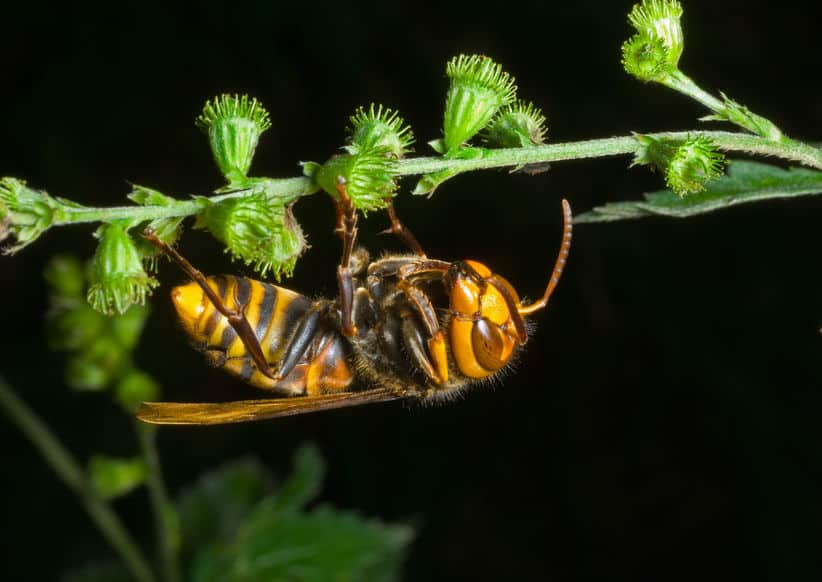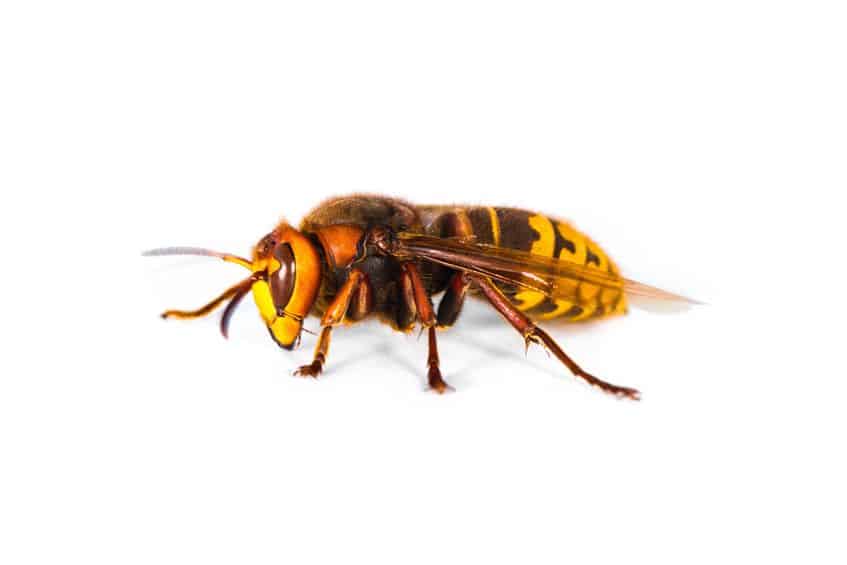Since 2019 the Asian giant hornet (Vespa mandarinia) also known as the ‘murder hornet’ has been discovered in areas of North America for the first time. This is a big concern for the local honey bee population. They differ from the existing European hornets (Vespa crabro) in North America in a number of ways.
The Asian giant hornet, also known as the ‘murder hornet’ is bigger than the European hornet and measures almost twice the length at 1.8 inches (4.5 cm) compared to 1 inch (2.5). Its size makes its sting much more painful to humans. In addition, to size, it can be recognized by its more pronounced black and yellow bands on its abdomen. They are far more aggressive towards honey bees than the European hornet, and will actively target and attack honey bee nests.
Location
Where is the murder hornet found?
The murder hornet is found through Eastern and South-Eastern Asia. In Japan where it is common, it is known as the ‘giant sparrow bee’. More recently, however, it has gained the nickname of ‘murder hornet’.
Since 2019 there have been sightings in parts of North America, particularly in the Vancouver area. If it does get a foothold in North America then this invasive species would certainly disrupt the current balance in the ecosystem, with potentially very negative effects on local honey bee populations as they target them. Attempts are being made to eradicate them before it’s too late.
Where is the European hornet found?
As its name suggests it is found across Europe. It is itself an invasive species in North America. It was first introduced in the 1800s by European settlers. It has since become a very common species across North America.
Size
How big is the murder hornet?
The murder hornet is the largest social wasp in the world measuring up to 1.8 inches or (4.5 cm) long and with a wingspan of 3 inches (7.5cm). It also has a very big stinger measuring 0.2 of an inch (6mm). Go here to see a list of the top 5 biggest wasps.
How big is the European hornet?
European hornets measure almost half the length of the Giant Asian hornet at 1 inch (2.5 cm in length). These hornets are significantly larger than other common wasp species found, but are themselves dwarfed by the ‘murder hornet’.
Appearance
What are the distinctive features of the murder hornet?
The ‘murder hornet’ has grey wings, brown antennae, a dark brown almost black thorax (the part of the wasp behind its head), and the abdomen has distinct bands of dark brown and yellow.
It also has a distinct extended ‘tooth’ on its mandibles (claw-like) mouthparts, that it uses for digging.

What are the distinctive features of the European hornet?
The European hornet at first glance has very similar coloration to the Asian giant hornet and is often confused. But closer inspection can see distinct differences.
It has reddish-orange wings, its antennae are brown, and Its abdomen although also dark brown and yellow has less distinct bands.

Food
What do Asian giant hornets eat?
Murder hornets raid honey bees’ nests. They will attack a honeybee colony in force and shockingly can eradicate a honey bee colony in as little as two hours. They like the honey, but they also target the honey bee larvae.
In Asia where the hornet and the bees have evolved together, the bees have developed defense mechanisms. The bees have evolved to literally wrap themselves around the hornets in balls of multiple bees. This results in suffocation for the hornets and the heat created by the bee’s vibration also kills the hornets.
The concern is that in areas such as North America the honey bees have not evolved this defense. If allowed to go unchecked ‘murder hornets’ could decimate the honey bee wasps population in North America.
They do not exclusively prey on bees. Like all wasps, they like sugary foods and prey on many other insects.
What food do European hornets eat?
European hornets will prey on the same insects, including honey bees, as the Asian giant hornet. They are far less damaging to honey bees, however, as they target individual worker bees and do not attack the nests habitually.
Sting
How venomous is the sting on the murder hornet?
The stinger of the ‘murder hornet’ is large enough to penetrate clothing and their large size means that they inject more venom with each sting. Like all wasps, they can sting multiple times.
The pain from the sting is said to be severe and can last for days. Although the venom hasn’t been recorded as significantly more venomous than other hornet species the quantity injected is higher due to the size.
Multiple stings of 30 or more have been recorded as fatal for humans. Numbers of around 50 people die from such stings each year.
How does the sting of the European hornet compare?
The sting from the European hornet is much less severe than the ‘murder hornet’ and is even less dangerous than the sting from a honey bee. One sting will not pose a risk to most people, but it will be painful.
Aggressiveness
The European hornet is not particularly aggressive towards humans. In fact, it is less aggressive than other common wasp species such as Yellowjackets. They will become aggressive if their nests are under threat or when they feel pressure on their bodies.
Are murder hornets more aggressive than the European hornet?
Even the murder hornet is not as aggressive as the yellowjacket when it comes to defending its nest. Unless their nests are disturbed they are very unlikely to be a threat to people and will for the most part not bother people.
Interestingly they are one of the only species of social wasp that actually give a warning before stinging. They fly back and forth snapping their mandibles (claw-like mouthparts) as a warning. Read more about the murder hornet here.
